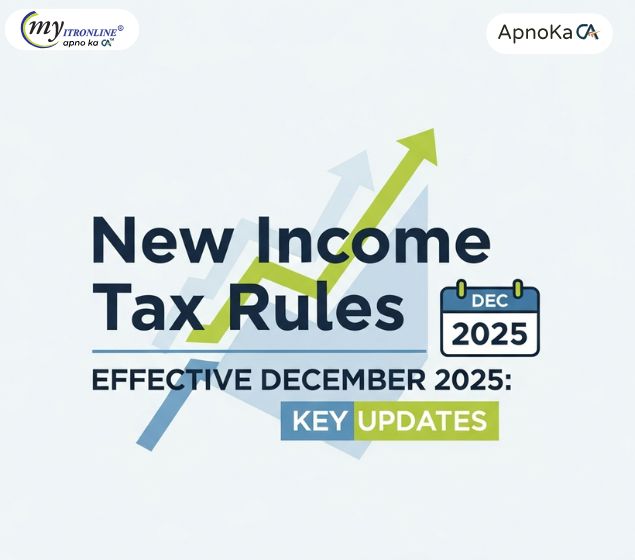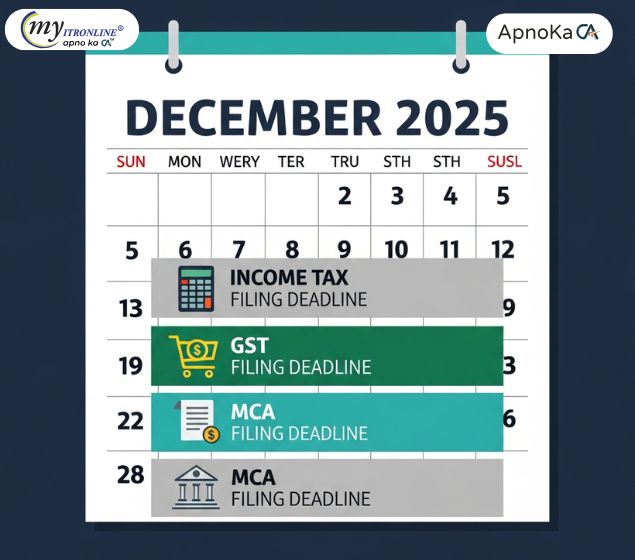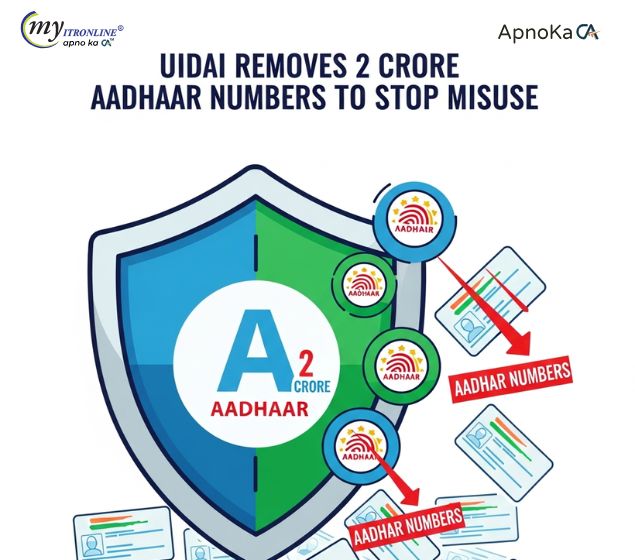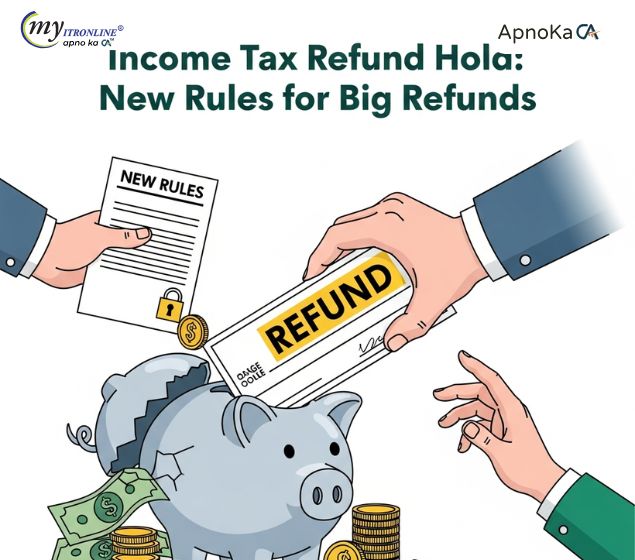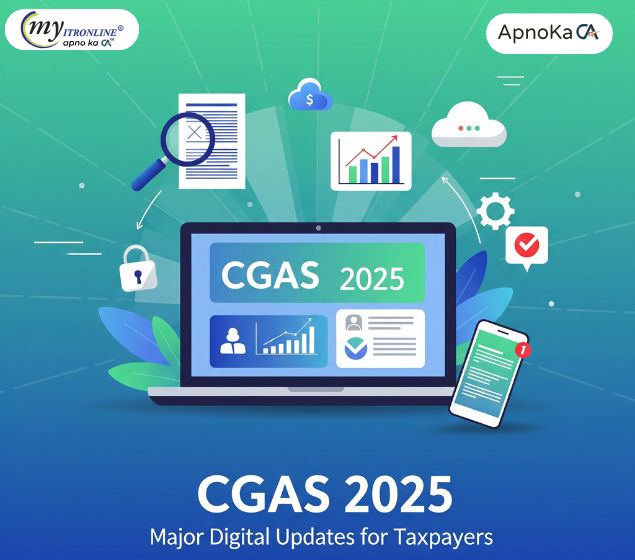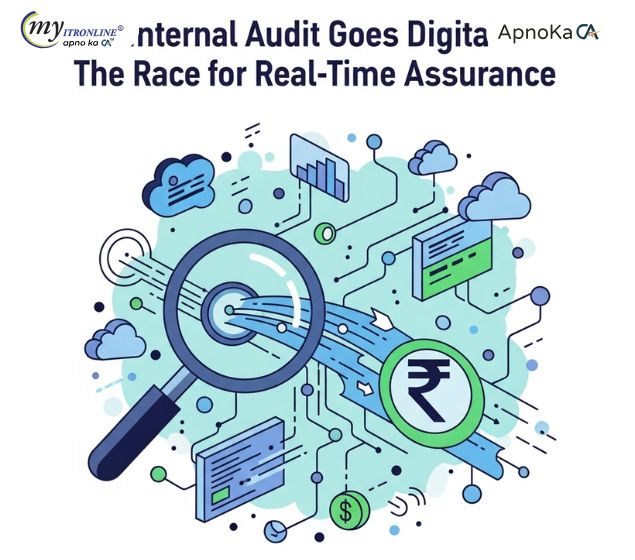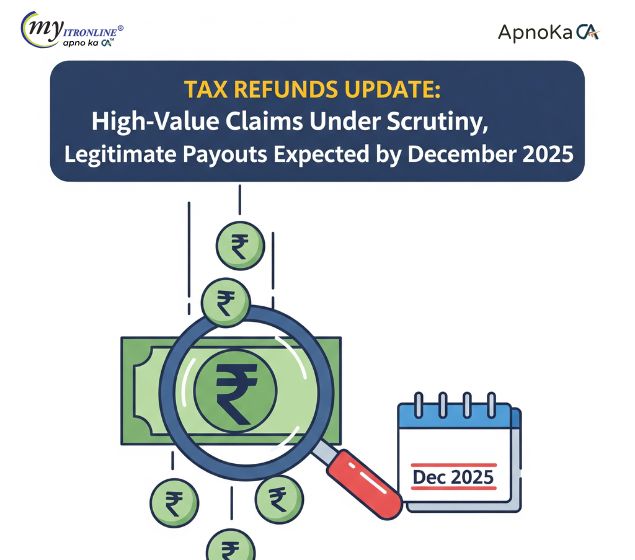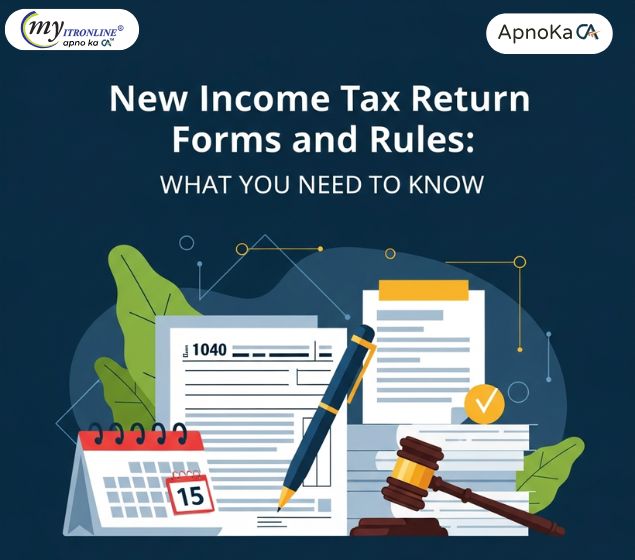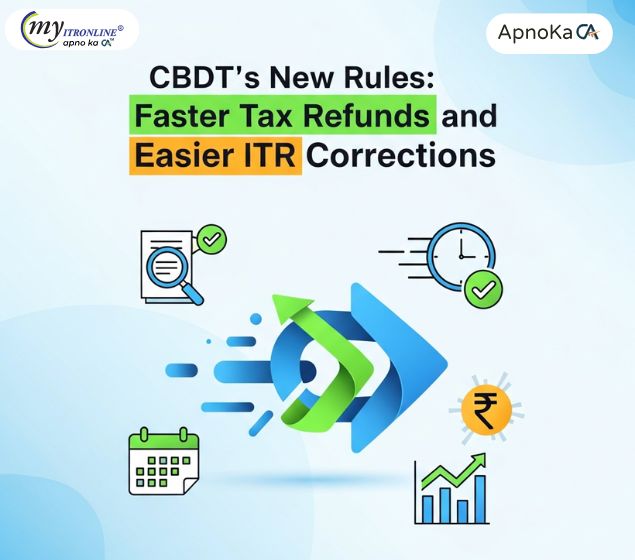Avoid Errors: How to Report Capital Gains in ITR for AY 2025-26 Under New Rules
This blog post details how to report capital gains from shares, mutual funds, and property in the Income Tax Return (ITR) for Assessment Year 2025-26 (Financial Year 2024-25). It explains the classification of gains (STCG/LTCG), calculation methods considering grandfathering, the significant impact of the Finance (No.2) Act 2024 changes effective July 23, 2024 (including curtailed indexation and revised tax rates), set-off rules, and specific ITR schedules (like CG and 112A). It also covers capital gains exemptions and emphasizes reconciliation with AIS/TIS.

Reporting Capital Gains in ITR (AY 2025-26): Shares, Mutual Funds, Property & New Tax Rules
Filing your Income Tax Return (ITR) for Assessment Year (AY) 2025-26 involves reporting all income earned during the Financial Year 2024-25 (April 1, 2024, to March 31, 2025). One crucial, and often complex, area is reporting Capital Gains. This includes profits (or losses) from selling assets like shares, mutual funds, property, gold, etc.
The FY 2024-25 saw significant changes in capital gains taxation rules, introduced via the Finance (No.2) Act, 2024 (presented in July 2024), primarily effective from July 23, 2024. This makes accurate reporting for AY 2025-26 even more critical.
This guide will walk you through how to classify, calculate, and report capital gains correctly in your ITR for AY 2025-26.
1. What are Capital Gains?
- Capital Asset: Any property held by you, whether connected to your business or not. Examples include land, buildings, house property, vehicles, patents, trademarks, leasehold rights, jewellery, shares, mutual funds, bonds, gold, etc.
- Capital Gain/Loss: The profit or loss arising from the transfer (sale, exchange, relinquishment, etc.) of a capital asset.
2. Types of Capital Gains: Short-Term vs. Long-Term (Based on Holding Period)
The holding period determines whether your gain/loss is Short-Term Capital Gains (STCG)/Short-Term Capital Loss (STCL) or Long-Term Capital Gains (LTCG)/Long-Term Capital Loss (LTCL). The periods applicable for AY 2025-26 are:
| Asset Type | Holding Period for LTCG |
|---|---|
| Listed Equity Shares / Equity-Oriented Mutual Funds (STT Paid) | More than 12 months |
| Immovable Property (Land, Building, House Property) | More than 24 months |
| Unlisted Shares | More than 24 months |
| Debt Mutual Funds (Acquired before April 1, 2023) | More than 36 months* |
| Debt Mutual Funds (Acquired on or after April 1, 2023) | Always STCG (Sec 50AA) |
| Other Assets (Gold, Jewellery, Non-Equity MFs acquired < Apr 1, 2023, Bonds etc.) | More than 36 months |
(Note: If the holding period is less than or equal to the period mentioned, it's STCG/STCL).
*Some sources suggest 24 months for Debt MFs acquired pre-April 2023 post Budget 2024 changes, aligning with unlisted shares. However, the standard pre-amendment rule was 36 months. For reporting clarity, stick to the specific asset class rules unless official ITR instructions state otherwise. The tax rate applied post July 22, 2024 might be uniform regardless.
3. Calculating Capital Gains
The basic formula is:
Capital Gain/Loss = Full Value of Consideration (Sale Price) - Cost of Acquisition - Cost of Improvement - Transfer Expenses
- Full Value of Consideration: What you received (or will receive) from the sale.
- Cost of Acquisition (COA): Your purchase price.
- Grandfathering (Sec 112A Assets): For listed equity/equity MFs acquired before Feb 1, 2018, the COA for calculating LTCG is the higher of your actual cost OR the lower of [FMV as on Jan 31, 2018] and [Actual Sale Price].
- Cost of Improvement (COI): Capital expenditure incurred to add value to the asset after purchase.
- Transfer Expenses: Brokerage, commission, stamp duty, registration fees, etc., directly related to the sale.
4. The Big Change: Indexation Benefit Curtailed (Post July 22, 2024)
- Indexation: Adjusts the COA and COI for inflation using the Cost Inflation Index (CII) notified by the CBDT. Formula:
Indexed Cost = Actual Cost * (CII of Sale Year / CII of Acquisition Year). This reduces taxable LTCG. - Finance (No.2) Act, 2024 Impact: For most capital assets transferred on or after July 23, 2024, the benefit of indexation has been removed.
- Major Exception - Immovable Property: If you acquired land/building before July 23, 2024, and sell it on or after July 23, 2024, you have an option. Your LTCG tax will be the lower of:
- Tax calculated at 12.5% on the gain (without indexation).
- Tax calculated at 20% on the gain (with indexation benefit).
- For property acquired on or after July 23, 2024, only the 12.5% rate (without indexation) applies to LTCG.
5. Capital Gains Tax Rates (AY 2025-26 / FY 2024-25)
Tax rates depend on the asset type, holding period, AND the date of transfer:
| Gain Type & Asset | Transfer Date | Applicable Tax Rate (+ Cess) | Indexation? | Key Section |
|---|---|---|---|---|
| STCG - Listed Equity/Equity MF (STT Paid) | Before 23-Jul-2024 | 15% | No | 111A |
| STCG - Listed Equity/Equity MF (STT Paid) | On or after 23-Jul-2024 | 20% | No | 111A |
| STCG - Debt MF (Acquired >= 1 Apr 2023) | Any date | Added to Income -> Taxed at Slab Rates | No | 50AA |
| STCG - Other (Property <24m, Unlisted Shares <24m, Debt MF pre-Apr 23 <36m, Gold <36m etc.) | Any date | Added to Income -> Taxed at Slab Rates | No | - |
| LTCG - Listed Equity/Equity MF (STT Paid) | Before 23-Jul-2024 | 10% on gain exceeding ₹1 Lakh/year | No | 112A |
| LTCG - Listed Equity/Equity MF (STT Paid) | On or after 23-Jul-2024 | 12.5% on gain exceeding ₹1.25 Lakh/year | No | 112A |
| LTCG - Immovable Property (Acquired < 23 Jul 24) | On or after 23-Jul-2024 | Lower of: [12.5% (No Indexation)] OR [20% (With Indexation)] | Optional | 112 |
| LTCG - Immovable Property (Acquired >= 23 Jul 24) | On or after 23-Jul-2024 | 12.5% | No | 112 |
| LTCG - Other (Unlisted Shares >24m, Debt MF pre-Apr 23 >36m, Gold >36m etc.) | Before 23-Jul-2024 | 20% | Yes | 112 |
| LTCG - Other (Unlisted Shares >24m, Debt MF pre-Apr 23 >36m, Gold >36m etc.) | On or after 23-Jul-2024 | 12.5% | No | 112 |
Tax Regime Impact: While the special flat rates (111A, 112, 112A) generally apply under both Old and New Regimes, gains taxed at slab rates will be affected by your chosen regime's slabs. The indexation option for property (acquired pre-July 23) is available under both regimes. Deductions under Chapter VI-A (like 80C) are generally not available against capital gains income.
6. Set-off and Carry Forward of Capital Losses
- Short-Term Capital Loss (STCL) can be set off against both STCG and LTCG in the same year.
- Long-Term Capital Loss (LTCL) can ONLY be set off against LTCG in the same year.
- Losses from capital gains cannot be set off against income from other heads (like Salary).
- Unadjusted STCL and LTCL can be carried forward for 8 assessment years.
- Carried forward STCL can be set off against future STCG or LTCG.
- Carried forward LTCL can ONLY be set off against future LTCG.
- Important: You cannot carry forward losses if you haven't filed your ITR by the original due date (July 31, 2025, for most).
7. How to Report Capital Gains in ITR Form (AY 2025-26)
-
Which Form? If you have capital gains, you generally cannot use ITR-1 or ITR-4. You'll need:- ITR-2: If you have capital gains but NO income from Business or Profession.
- ITR-3: If you have capital gains AND income from Business or Profession.
- Key Schedules:
- Schedule CG (Capital Gains): This is the main schedule. You need to report details for each type of capital asset sold during FY 2024-25.
- Breakdown by holding period (Short-term/Long-term).
- Provide details like Full Value of Consideration, Cost of Acquisition, Cost of Improvement, Transfer Expenses.
- Crucially: You will likely need to report transactions that occurred before July 23, 2024, separately from those on or after July 23, 2024, due to the changes in tax rates and indexation rules. The ITR utility should guide this segregation.
- Calculate gain/loss for each transaction/asset type.
- Claim applicable exemptions (Sec 54, 54F, 54EC) within this schedule by providing relevant details (amount invested, date, etc.).
- Schedule 112A: Specifically for reporting LTCG from the sale of listed equity shares or equity-oriented MF units (where STT is paid) and the gain is taxed under Sec 112A (i.e., gain > ₹1.25 Lakh for transfers post July 22, 2024).
- Requires scrip-wise/unit-wise details: ISIN, Share/Unit Name, Number Sold, Sale Price, Cost of Acquisition, FMV as on Jan 31, 2018 (for grandfathering calculation). You can often import this data from broker statements via the ITR utility.
- Schedule SI (Special Income): This schedule aggregates income chargeable to tax at special flat rates (like STCG u/s 111A, LTCG u/s 112A, LTCG u/s 112). The calculated tax on these gains feeds into your main tax computation.
- Schedule BFLA (Brought Forward Losses Adjustment) & Schedule CFL (Carry Forward Losses): Use these to report and adjust losses brought forward from previous years and determine losses to be carried forward to future years.
- Schedule CG (Capital Gains): This is the main schedule. You need to report details for each type of capital asset sold during FY 2024-25.
- Check AIS/TIS: Your Annual Information Statement (AIS) and Taxpayer Information Summary (TIS) on the income tax portal will contain information about your share/MF/property transactions reported by third parties (brokers, registrars, sub-registrars). It is vital to reconcile the information in your ITR with AIS/TIS to avoid discrepancies and potential notices. Report all gains, even if not reflected in AIS, and correct any inaccurate information in AIS via the portal's feedback mechanism.
8. Claiming Capital Gains Exemptions (Brief Overview)
You can reduce your taxable LTCG by reinvesting the gains/proceeds under specific sections (primarily for property/other long-term assets):
- Section 54: Reinvest LTCG from selling a residential house into buying/constructing another residential house within specified timelines (purchase 1 year before or 2 years after sale; construct within 3 years). Capped at ₹10 Crore exemption.
- Section 54F: Reinvest net sale consideration from selling any long-term asset other than a residential house into buying/constructing one residential house within specified timelines. Capped at ₹10 Crore exemption. (Requires you not to own more than one other residential house).
- Section 54EC: Reinvest LTCG from selling land or building (or both) into specified bonds (like NHAI, REC, PFC, IRFC) within 6 months of sale. Capped at ₹50 Lakh investment per financial year.
These exemptions must be claimed in Schedule CG with relevant details.
Conclusion
Reporting capital gains for AY 2025-26 requires careful attention due to the mid-year changes in tax rates and indexation rules effective from July 23, 2024.
- Classify gains correctly based on asset type and holding period.
- Calculate gains accurately, considering the correct cost, grandfathering (if applicable), and indexation (only where specifically allowed, like property acquired pre-July 23).
- Apply the correct tax rate based on the asset type AND the date of transfer (before or after July 23, 2024).
- Report meticulously in the correct ITR form (ITR-2/ITR-3) and schedules (CG, 112A, SI, BFLA, CFL).
- Reconcile with your AIS/TIS data.
- Claim exemptions properly if applicable.
- File your ITR by the due date (July 31, 2025, for non-audit cases) to carry forward any losses.
Given the complexity, especially with the recent changes, consider using reliable tax software or consulting a tax professional to ensure accurate reporting and compliance.
FILING YOUR INCOME TAX RETURN F.Y 2024-25 (A.Y. 2025-2026) WITH MYITRONLINE
The income tax filing deadline is right around the corner. If you haven’t filed yet, do it today with Myitronline! Avoid last minute rush and file your tax return today on MYITRONLINE in Just 5 mins.(www.myitronline.com)
If you are looking for eCA assistance to file your income tax return/ GST, you can opt for MYITRONLINE eCA assisted plan starting
Upload Salary Individual Form-16
If you have any questions with filing your tax return, please reply to this mail. info@myitronline.com OR call 9971055886,8130309886.
Note-All the aforementioned information in the article is taken from authentic resources and has been published after moderation. Any change in the information other than fact must be believed as a human error. For queries mail us at marketing@myitronline.com
Krishna Gopal Varshney
An editor at apnokacaKrishna Gopal Varshney, Founder & CEO of Myitronline Global Services Private Limited at Delhi. A dedicated and tireless Expert Service Provider for the clients seeking tax filing assistance and all other essential requirements associated with Business/Professional establishment. Connect to us and let us give the Best Support to make you a Success. Visit our website for latest Business News and IT Updates.
Leave a reply
Your email address will not be published. Required fields are marked *Share this article
Krishna Gopal Varshney, Founder & CEO of Myitronline Global Services Private Limited at Delhi. A dedicated and tireless Expert Service Provider for the clients seeking tax filing assistance and all other essential requirements associated with Business/Professional establishment. Connect to us and let us give the Best Support to make you a Success. Visit our website for latest Business News and IT Updates.
View articles








